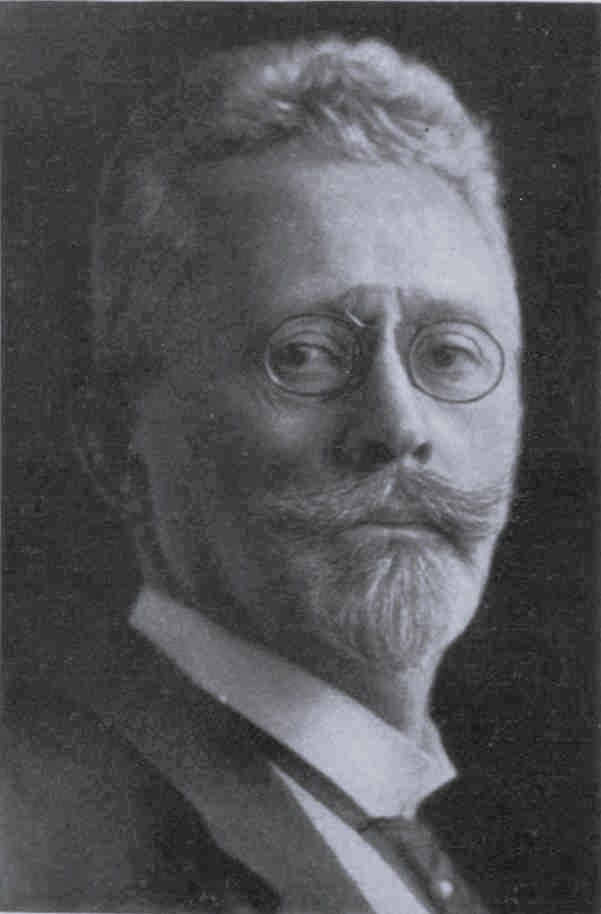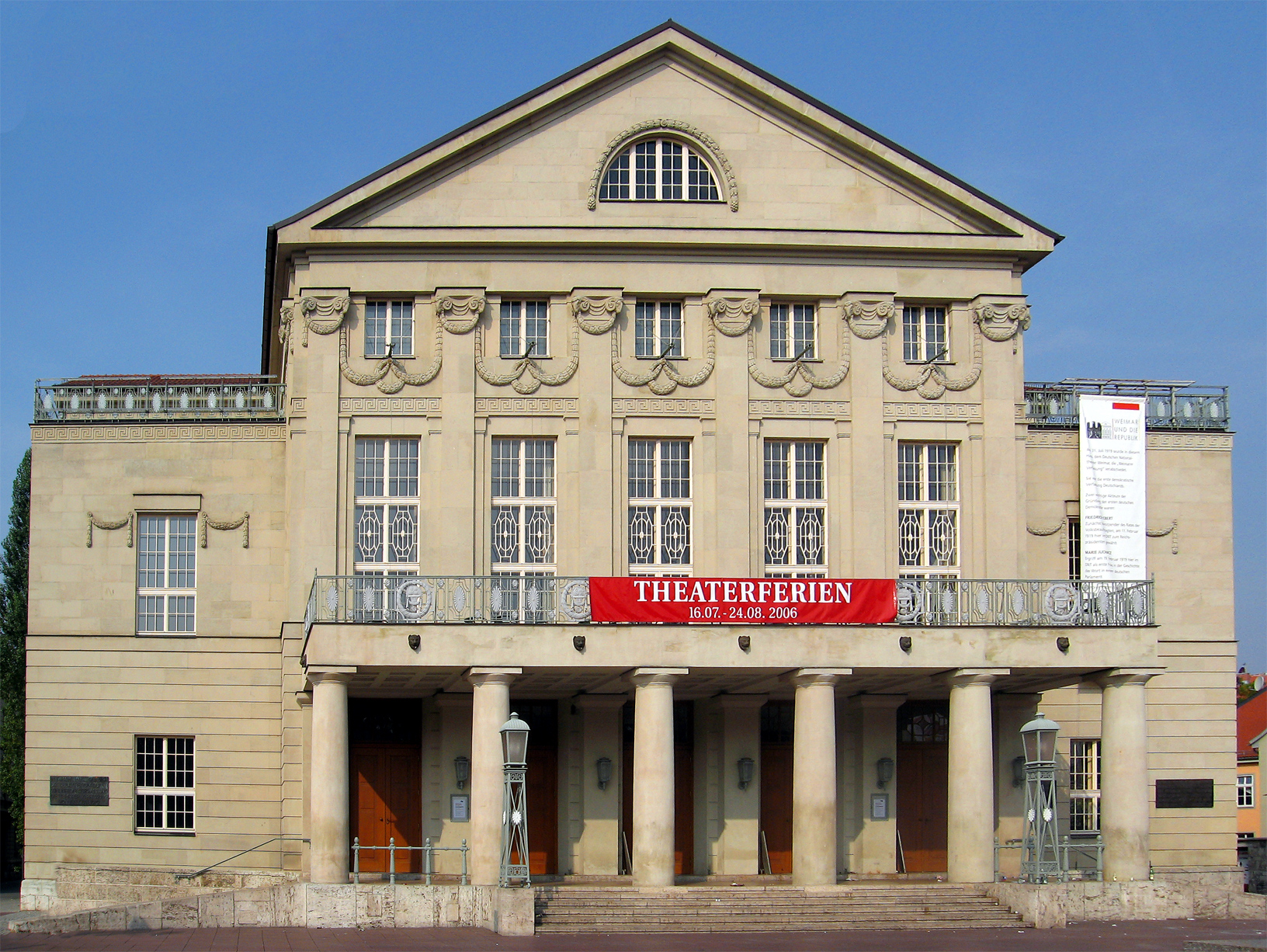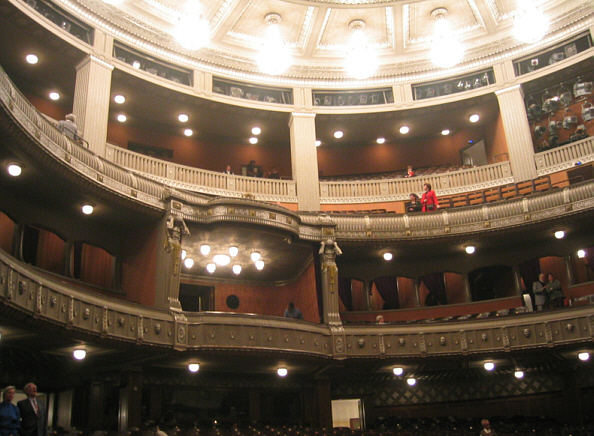|
Max Littmann
Max Littmann (3 January 1862 – 20 September 1931) was a German architect. Littmann was educated in the Gewerbeakademie Chemnitz and the Technische Hochschule Dresden. In 1885, he moved to Munich where he met Friedrich Thiersch and Gabriel von Seidl and where - after two study trips to Italy and Paris - he established himself as a free architect. In 1891, he joined the contracting business of his father-in-law Jakob Heilmann, thus transforming it into the Heilmann & Littmann general partnership (later becoming a limited partnership), taking charge of the planning department. Littmann excelled in the erection of magnificent buildings, e. g. theaters, department stores and spas and was the perfect supplement to Heilmann, who had specialized in living house construction. Even during his lifetime, Littmann was listed in the Encyclopaedia Judaica. His pedigree doesn't give any clue on the often referred Jewish descent, rather he is descended from a Protestant family in Oschatz ... [...More Info...] [...Related Items...] OR: [Wikipedia] [Google] [Baidu] |
Architect
An architect is a person who plans, designs and oversees the construction of buildings. To practice architecture means to provide services in connection with the design of buildings and the space within the site surrounding the buildings that have human occupancy or use as their principal purpose. Etymologically, the term architect derives from the Latin ''architectus'', which derives from the Greek (''arkhi-'', chief + ''tekton'', builder), i.e., chief builder. The professional requirements for architects vary from place to place. An architect's decisions affect public safety, and thus the architect must undergo specialized training consisting of advanced education and a ''practicum'' (or internship) for practical experience to earn a Occupational licensing, license to practice architecture. Practical, technical, and academic requirements for becoming an architect vary by jurisdiction, though the formal study of architecture in academic institutions has played a pivotal role in ... [...More Info...] [...Related Items...] OR: [Wikipedia] [Google] [Baidu] |
Kurtheater Bad Kissingen
The Kurtheater Bad Kissingen is a theatre in the spa town Bad Kissingen in Bavaria, Germany. History The theatre was built in 1904 by the Munich architect Max Littmann in the neo baroque style and inauguratet on 25 June 1905 with a performance of the opera Pagliacci of Ruggero Leoncavallo. The theatre with its 538 seats replaced an older wooden theatre building in swiss style of 1856. The theatre was initially operated by the spa administration (Badkommissariat). The duty of the theatre was to entertain the visitors of the spa. The old theatre had no longer corresponded to the increased demands of the world bath. From 1871 onwards, the theatre was rented to Eduard Reimann, director of the theatre of Würzburg,. This made it possible to employ the ensemble of Würzburg during the summer months. After his death in 1898 his son, the actor Otto Reimann, became his successor. Otto Reimann continued his successful performance with his own ensemble in the new theatre. Despite the difficu ... [...More Info...] [...Related Items...] OR: [Wikipedia] [Google] [Baidu] |
1862 Births
Year 186 ( CLXXXVI) was a common year starting on Saturday (link will display the full calendar) of the Julian calendar. At the time, it was known as the Year of the Consulship of Aurelius and Glabrio (or, less frequently, year 939 ''Ab urbe condita''). The denomination 186 for this year has been used since the early medieval period, when the Anno Domini calendar era became the prevalent method in Europe for naming years. Events By place Roman Empire * Peasants in Gaul stage an anti-tax uprising under Maternus. * Roman governor Pertinax escapes an assassination attempt, by British usurpers. New Zealand * The Hatepe volcanic eruption extends Lake Taupō and makes skies red across the world. However, recent radiocarbon dating by R. Sparks has put the date at 233 AD ± 13 (95% confidence). Births * Ma Liang, Chinese official of the Shu Han state (d. 222) Deaths * April 21 – Apollonius the Apologist, Christian martyr * Bian Zhang, Chinese official and gene ... [...More Info...] [...Related Items...] OR: [Wikipedia] [Google] [Baidu] |
Michael Imhof Verlag
Michael Imhof Verlag is a German publishing company in Petersberg, Hesse. They are known especially for publishing books with a local interest, on art, on history, politics, religion, nature, and culture Culture () is an umbrella term which encompasses the social behavior, institutions, and norms found in human societies, as well as the knowledge, beliefs, arts, laws, customs, capabilities, and habits of the individuals in these groups .... Besides titles in German, they publish a limited number of books in English; a number of their titles, such as recent books on St. Elizabeth of Thuringia, have received international attention. References External linksMichael Imhof Verlag website Publishing companies of Germany Book publishing companies of Germany {{Publish-company-stub ... [...More Info...] [...Related Items...] OR: [Wikipedia] [Google] [Baidu] |
Poznań
Poznań () is a city on the River Warta in west-central Poland, within the Greater Poland region. The city is an important cultural and business centre, and one of Poland's most populous regions with many regional customs such as Saint John's Fair (''Jarmark Świętojański''), traditional Saint Martin's croissants and a local dialect. Among its most important heritage sites are the Renaissance Old Town, Town Hall and Gothic Cathedral. Poznań is the fifth-largest and one of the oldest cities in Poland. As of 2021, the city's population is 529,410, while the Poznań metropolitan area (''Metropolia Poznań'') comprising Poznań County and several other communities is inhabited by over 1.1 million people. It is one of four historical capitals of medieval Poland and the ancient capital of the Greater Poland region, currently the administrative capital of the province called Greater Poland Voivodeship. Poznań is a center of trade, sports, education, technology and touri ... [...More Info...] [...Related Items...] OR: [Wikipedia] [Google] [Baidu] |
Deutsches Nationaltheater And Staatskapelle Weimar
The (DNT) is a German theatre and musical organisation based in Weimar. It is a twin institution, consisting of the theatrical (German National Theatre, now solely based in Weimar) and the symphony orchestra known as the . It has a total of six stages across the city and also hosts touring orchestras and theatre companies, as well as making appearances in electronic media. Venues # Main House ('), traditional main stage on Theaterplatz (music and theatre) # Foyer and Studio Stage ('), within the main house on Theaterplatz (music and theatre; cabaret) # ''E-Werk Weimar'', a former industrial site with two venues, ' and ' (music and theatre) # ' (concerts by the Staatskapelle Weimar) The Staatskapelle Weimar History The precursor ensemble of Staatskapelle Weimar dates from 1482, with the formation of a musical ensemble in service of the Weimar ''Fürsten'' (Princes). In 1602, the ensemble attained resident status at the Weimar court, as the ''Herzoglichen Hofkapelle'' (Ducal ... [...More Info...] [...Related Items...] OR: [Wikipedia] [Google] [Baidu] |
Julius Mössel
The gens Julia (''gēns Iūlia'', ) was one of the most prominent patrician families in ancient Rome. Members of the gens attained the highest dignities of the state in the earliest times of the Republic. The first of the family to obtain the consulship was Gaius Julius Iulus in 489 BC. The gens is perhaps best known, however, for Gaius Julius Caesar, the dictator and grand uncle of the emperor Augustus, through whom the name was passed to the so-called Julio-Claudian dynasty of the first century AD. The Julius became very common in imperial times, as the descendants of persons enrolled as citizens under the early emperors began to make their mark in history.''Dictionary of Greek and Roman Biography and Mythology'', vol. II, pp. 642, 643. Origin The Julii were of Alban origin, mentioned as one of the leading Alban houses, which Tullus Hostilius removed to Rome upon the destruction of Alba Longa. The Julii also existed at an early period at Bovillae, evidenced by a very a ... [...More Info...] [...Related Items...] OR: [Wikipedia] [Google] [Baidu] |
Staatstheater Stuttgart
The Staatstheater Stuttgart (Stuttgart State Theatre) is a theatre with three locations, Oper Stuttgart (Opera Stuttgart), Stuttgarter Ballett (Stuttgart Ballet), and Schauspiel Stuttgart (Stuttgart Drama Theatre), in Stuttgart, Germany. The state that its name refers to is Baden-Württemberg. Architecture Designed by the noted Munich architect Max Littmann, who won a competition to create new royal theatres, the building was constructed between 1909 and 1912 as the Königliche Hoftheater, royal theatre of the Kingdom of Württemberg with a Grosses Haus (large house) and a Kleines Haus (small house). In 1919, the theatres were renamed to Landestheater, and later Staatstheater. The house for drama theatre, Kleines Haus, was destroyed by bombing during World War II, and today, the site is occupied by a new Kleines Haus, designed by Hans Volkart, which opened in 1962. The Opera House (Grosses Haus), is one of only a few German opera houses to survive the bombing of World War II. ... [...More Info...] [...Related Items...] OR: [Wikipedia] [Google] [Baidu] |
Regentenbau (Bad Kissingen)
The ''Regentenbau'' (German for "regent's building") is a German concert hall in the town Bad Kissingen in Bavaria. History The concert hall was built from 1911 to 1913 in a neo-baroque style according to the plans of the architect Max Littmann. Prince regent Luitpold of Bavaria commissioned the construction of the ''Regentenbau''. The building was inauguratet by his son and successor Ludwig III of Bavaria on 15 and 16 May 1913. The owner is the state of Bavaria. The ''Regentenbau'' is under monument protection and is registered under the number D-6-72-114-38. Situated between the ''Kurgarten'' (spa garden) and the river ''Fränkische Saale'', the ''Regentenbau'' completed the spa area of Bad Kissingen. It was the conclusion of the comprehensive building contract in the royal spa, which Luitpold of Bavaria had given in 1905 to Max Littmann as "special commissioner for the state's new buildings in the royal spa garden". This order, for which the Bavarian government release ... [...More Info...] [...Related Items...] OR: [Wikipedia] [Google] [Baidu] |
Staatstheater Stuttgart
The Staatstheater Stuttgart (Stuttgart State Theatre) is a theatre with three locations, Oper Stuttgart (Opera Stuttgart), Stuttgarter Ballett (Stuttgart Ballet), and Schauspiel Stuttgart (Stuttgart Drama Theatre), in Stuttgart, Germany. The state that its name refers to is Baden-Württemberg. Architecture Designed by the noted Munich architect Max Littmann, who won a competition to create new royal theatres, the building was constructed between 1909 and 1912 as the Königliche Hoftheater, royal theatre of the Kingdom of Württemberg with a Grosses Haus (large house) and a Kleines Haus (small house). In 1919, the theatres were renamed to Landestheater, and later Staatstheater. The house for drama theatre, Kleines Haus, was destroyed by bombing during World War II, and today, the site is occupied by a new Kleines Haus, designed by Hans Volkart, which opened in 1962. The Opera House (Grosses Haus), is one of only a few German opera houses to survive the bombing of World War II. ... [...More Info...] [...Related Items...] OR: [Wikipedia] [Google] [Baidu] |



.jpg)

